We made several passes over the identified area, known as MiG Alley, looking for Major George A. Davis.
This article marks the fourth story from Bill’s Korea Files. Click here to read part 1, click here to read part 2, and click here to read part 3.
February 10, 1952
At the beginning of 1952, someone had the great idea to stop ordering drop tanks (external fuel tanks) for F-86s, as activity along the front lines had developed into a defensive mode, only killing about 15-20 Americans a day. They obviously did not realize the Air War was at its peak. Consequently, we were forced to fly with only one fuel tank until they recognized and fixed the problem. This, of course, reduced our time On-Target. As a backup to assist anyone in trouble as a result of the mission, a Flight (Air Force unit of three to six aircraft) of four was positioned on Runway Alert at the takeoff end of the active runway. On Feb 10, 1952, my Flight (Green) was assigned the duty. As it was considered a 5-minute alert, we were not required to remain in the aircraft.
Scramble Alert at K-14 (Kimpo Air Base)
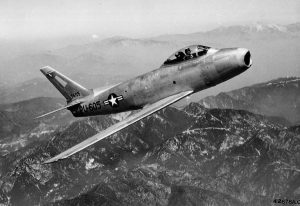
Monitoring the mission via radio, it was determined that the day’s sorties (AF term for a dispatched unit, in this case, aircraft, with a specific mission) were on their way home. I contacted Combat Operations and was told to stand down and return the aircraft to the ramp. We climbed into the aircraft, fired off and began to taxi back across the Active Runway. Just as we were crossing the runway, the tower called out “Green Flight, this is K-14 Tower. Scramble, Scramble; repeat, Green Flight Scramble, Scramble!”
With that I said, “Let’s go!” and four throttles hit the firewalls. Expecting to just taxi the aircraft back up to the parking area, none of us were strapped in. I believe it was the fastest any of us buckled up, all while rolling down the runway.
No Fuel, No Chance
Once airborne and joined up, I contacted Ground Control to determine our mission. They informed me that an aircraft was down, and another was disoriented and unsure of his position. I requested the call sign for the aircraft-in-trouble and was told it was “Red Two.” Having attended the mission briefing, I knew that Red One was Major George A. Davis. I contacted Red Two and asked where he thought he was. He said he was “inland over a big city.” That, of course, could only be Pyongyang, the North Korean capital. He reported his altitude at 20,000 feet, and I told him to stay there in a left-hand pattern as we approached from the “seven oh clock” position. Once he spotted us, I instructed him to join Green Three and Four and requested they take him home.
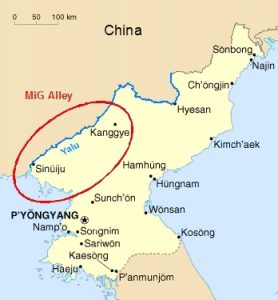
Green Two and I proceeded north as I contacted Ground Control for the last “Fix” they may have had on Red One. They advised it was the area farther north near Sinŭiju and slightly inland from the coast.
Approaching the area, we spread out and descended down to about 1,000 feet to stay out of the North’s radar and in hopes of seeing a parachute or signal flares. I remembered talking with friends who were flying F-84’s that the North would line the valleys with anti-aircraft guns bore-sighted for their normal delivery speed of around 350 knots, therefore I increased our speed to 400 knots. I checked in the rear-view mirror to see a sky of solid black. We made several passes over the identified area, known as MiG Alley, with no success. Because we did not have drop tanks, our fuel supply was dangerously low and we were forced to return to base, leaving Red One, Major Davis, behind.
Remembering Double Ace Major Davis
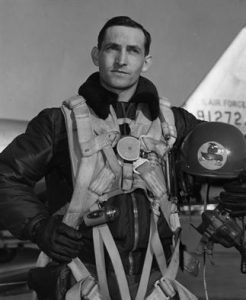
Major George A. Davis, Jr., was awarded a posthumous Congressional Medal of Honor, was the Korean War’s first Double Ace. Assigned to the Pigeons Squadron, and was posthumously promoted to Lt. Col. in 1953. He shot down four MIG-15’s (Mikoyan-Gurevich-15: Soviet jet fighter aircraft) in one day in 1951, and before he was killed in action over North Korea on February 10, 1952, he destroyed a total of 11 MIG-15’s and three TU-2’s (Tupolev Tu–2: twin-engine Soviet high-speed daylight and front-line bomber aircraft). Lt. Col. Davis was the fourth-highest American scoring ace of the Korean War with a total of 21 victories, and is one of only seven American military pilots to become an ace in two wars (Korean and Japanese).
Featured Image: Courtesy of USAF
Update: 58 Years Later
In 2010, Bill Todd and his wife were on vacation, visiting China. They went to the Chinese Air Museum north of Beijing, which was partially a cavern built into the side of a hollowed-out hill. There were many aircraft on display, mostly MiG’s. In front of one of these aircraft, there was a placard that read, “On February 10, 1952, Major Zhang Jihui of the Chinese People’s Liberation Army Air Force shot down the leading USAF Korean War Ace Major Davis.”
I felt like all had come full circle. Bill Todd
Bill notes that this claim has been disputed by both the Soviet’s and our USAF, who claim that a USSR pilot shot down Davis. Major Zhang claimed to have been shot in this encounter, so the plane on display wasn’t his, just a tribute.






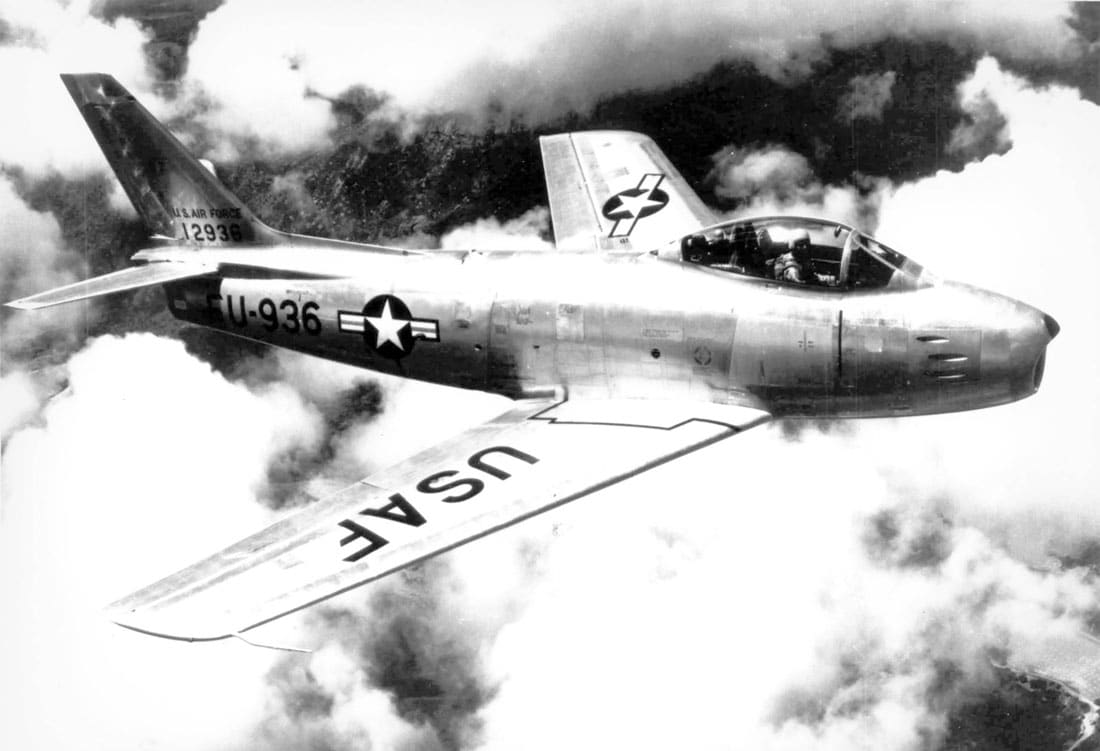







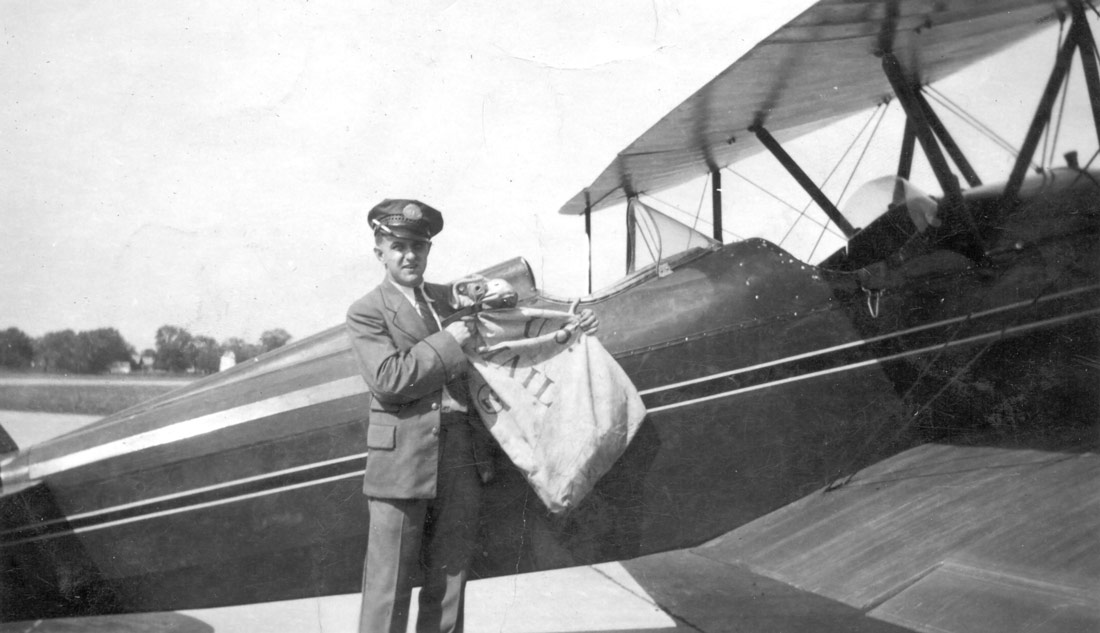
After years of research, I believe I am sure that Zhang was the Chinese pilot who shot down George Davis. However, ChiCom air force lost not 1 but 5 MiGs fighting George Davis and his wingman, Lt. Littlefield.
Davis dived on the ChiCom formation and shoot down Wang, De-Yu (KIA) in the first pass. He then “…pulled right and pulled up, deployed speed brake, reversed, and came down for the 2nd pass… “, according to Davis’ wingman, Lt. Littlefield. In the 2nd pass, Davis shot down Zhai, Zi-Ching (ejected), and damaged Wang, Ze-Ping’s engine. Wang’s MiG lost the power and eventually ejected. At the moment, Zhang, Ji-Hui and wingman Shan, Zi-Yu caught Davis off guard and shoot him down from 7 o’clock direction. Amazingly, Zhang and Shan also came down after a little while. Zhang ejected safely but Shan was KIA. There was only one other Sabre — Littlefield’s — involved in this engagement and he did not get any confirmed kill. Zhang and Shan’s losses were probably due to the friendly fires from their panicked comrades or Littlefield’s shooting which was not registered by the gun camera or even their own inexperience. That’s 5 MiGs lost against 1 Sabre. Actually, ChiCom almost lost one more MiG in this encounter. Chi, Lian-Bi’s MiG went into a tail-spin during the panicking evasion at Davis’ 2nd pass. The MiG spiraled down to about 1,000 meters before he regained the control.
For years, the real loss of MiGs were not mentioned in any of the Chinese publication. Zhang was credited with 2 victories and was portrayed a hero in the limelight in China. However, in 1990s, Chinese publications started to admitted that Zhang and Shan were shot down in the air battle. In 2000s, more information leaked and it’s found that at least 3 MiGs were lost. Finally, in 2010s, it was leaked that there were totally 5 MiGs lost in this epic encounter.
Please contact me regarding George Davis I have written articles about his last flight. I am a historian of the American Fighter Aces Association and a Board member for decades. Look forward to hearing from you.
Regards,
Gregg